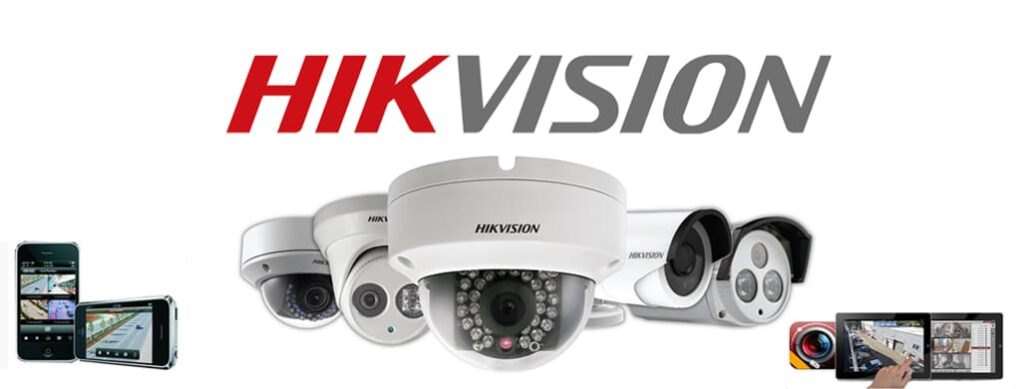
Smarter, Faster, Greener, The Evolution of Wireless CCTV with Solar, 5G, and AI
In an era where security, surveillance, and real-time monitoring have become non-negotiable, wireless CCTV technology is going through a transformation unlike anything we’ve seen before. Traditional cameras that relied on bulky wiring, limited connectivity, and constant power supply are rapidly being replaced by smarter, faster, and more energy-efficient solutions. The convergence of solar-powered CCTV cameras, 5G connectivity, and Edge AI technology is shaping the next generation of wireless surveillance systems.
This revolution is not just about better picture quality or easier installation—it’s about creating a fully autonomous, intelligent security ecosystem capable of predicting, analyzing, and preventing threats in real time. Let’s dive into how these three groundbreaking innovations—solar energy, 5G networks, and Edge AI—are redefining the future of wireless CCTV.
Why the Future is Wireless
Gone are the days when CCTV surveillance required endless wires, expensive infrastructure, and constant power sources. Businesses, governments, and even homeowners now demand wireless CCTV cameras because they are easier to install, more flexible, and cost-effective. Wireless cameras also integrate seamlessly with cloud storage, mobile apps, and AI-powered monitoring systems.
With the rise of IoT (Internet of Things) and smart cities, the demand for surveillance that works anywhere—without dependence on electrical grids or unstable networks—is skyrocketing. This is exactly where solar power, 5G, and Edge AI come into play.
Solar-Powered CCTV: Energy Independence for Smart Surveillance
One of the biggest challenges for traditional CCTV systems has always been power dependency. Cameras needed to be connected to constant electricity, making remote areas or outdoor environments difficult to secure. Solar CCTV cameras solve this problem by harnessing renewable energy to power themselves day and night.
Key Advantages of Solar CCTV:
- Energy Efficiency: Completely independent of the electrical grid.
- Eco-Friendly: Reduces carbon footprint and supports sustainable energy practices.
- Remote Monitoring: Perfect for farms, highways, construction sites, and rural areas where electricity is limited.
- Cost-Effective: Eliminates wiring, trenching, and electricity bills.
Today’s solar cameras often come with integrated lithium batteries, ensuring uninterrupted night vision and cloudy-day performance. Some even combine hybrid solar-grid technology, giving you the best of both worlds.
The adoption of solar-powered CCTV is expected to skyrocket as more businesses and homeowners look for green energy solutions and off-grid surveillance systems.
5G Connectivity: The Backbone of Next-Gen CCTV
If solar power frees cameras from electricity, then 5G connectivity frees them from bandwidth and latency constraints. Traditional CCTV often suffered from slow data transfer, lagging live streams, and limited remote access. With 5G-powered wireless CCTV, those problems disappear.
Why 5G is a Game Changer for CCTV:
- Ultra-Low Latency: Real-time video monitoring without delay.
- High Bandwidth: Supports ultra-HD, 4K, and even 8K video streaming without buffering.
- Massive IoT Integration: Allows thousands of cameras and IoT devices to be connected simultaneously.
- Remote Surveillance Anywhere: Enables real-time access from mobile phones, control centers, or even drones.
Imagine a city where traffic CCTV cameras instantly send high-definition feeds to control centers, or a business owner who can check every corner of their property in real time from halfway across the world. That’s the promise of 5G-enabled CCTV surveillance.
Edge AI: Making CCTV Smarter, Faster, and More Predictive
Power and connectivity are important, but intelligence is where the real revolution lies. Traditional CCTV systems simply recorded video, leaving human operators to monitor hours of footage. Today, Edge AI (Artificial Intelligence at the device level) makes cameras not just record, but think.
Capabilities of Edge AI in CCTV Systems:
- Facial Recognition: Identifying known suspects or missing persons instantly.
- Object Detection: Spotting abandoned bags, vehicles, or weapons in real time.
- License Plate Recognition: Automated traffic law enforcement.
- Behavior Analysis: Detecting unusual movements, crowd formations, or suspicious activities.
- Smart Alerts: Reducing false alarms by differentiating between a stray animal and an intruder.
Unlike cloud-based AI that requires data to be uploaded and processed in remote servers, Edge AI works locally, within the camera itself or nearby devices. This ensures faster responses, reduced bandwidth usage, and enhanced privacy since sensitive data doesn’t always leave the site.
The Convergence: Solar + 5G + Edge AI
Now, imagine the true power of wireless CCTV when all three technologies converge:
- A solar-powered camera operating off-grid.
- 5G connectivity streaming ultra-HD video in real time.
- Edge AI algorithms analyzing threats instantly at the edge.
This combination means you have a completely autonomous surveillance system that doesn’t need electricity, works anywhere in the world, and can think for itself. Whether it’s monitoring smart cities, highways, industrial zones, remote villages, or military bases, this technology ensures round-the-clock, intelligent protection.
Real-World Applications of Next-Gen Wireless CCTV
- Smart Cities – Traffic monitoring, crowd management, and crime prevention in urban areas.
- Critical Infrastructure – Securing power plants, oil rigs, and airports with autonomous surveillance.
- Agriculture & Rural Security – Monitoring farmland, livestock, and irrigation systems without electricity.
- Construction Sites – Preventing theft, monitoring workers, and ensuring safety compliance.
- Retail & Business Security – Using AI-powered cameras to track customer behavior, prevent shoplifting, and enhance customer service.
- Border & Defense – Autonomous solar-powered surveillance for remote border regions.
Market Trends: The Growth of Wireless CCTV
According to industry analysts, the global wireless CCTV market is expected to grow exponentially, fueled by the demand for AI-powered surveillance, renewable energy integration, and 5G networks. Governments across the world are investing in smart cities and intelligent transportation systems, while private businesses are adopting smarter, greener, and faster solutions.
Key Growth Drivers:
- Increasing demand for AI-driven security.
- Rising adoption of renewable energy surveillance.
- Expansion of 5G networks worldwide.
- Need for cost-effective, off-grid security solutions.
This trend suggests that within the next decade, traditional wired CCTV may become obsolete, replaced almost entirely by wireless, solar-powered, AI-driven surveillance systems.
Challenges and Considerations
While the future looks promising, the transition to solar, 5G, and Edge AI CCTV comes with challenges:
- Cost: Advanced AI-powered solar cameras can be expensive initially.
- Network Availability: 5G coverage is still expanding globally.
- Data Privacy: AI and facial recognition raise privacy concerns.
- Weather Dependency: Solar panels may face limitations in extreme weather.
These challenges, however, are rapidly being addressed with technological innovations like hybrid solar-battery systems, encrypted AI processing, and affordable mass production.
The Future Outlook
Looking ahead, the integration of solar-powered energy, 5G networks, and Edge AI will redefine not just CCTV, but the entire concept of security. Imagine autonomous drones powered by solar charging stations, patrolling borders and feeding AI-analyzed video directly to control centers. Or smart home security systems that recognize your family members but alert you instantly if a stranger enters.
The future of CCTV is not just about watching—it’s about predicting, preventing, and protecting in real time.
Final Thoughts
The future of wireless CCTV is clear: solar energy provides independence, 5G provides connectivity, and Edge AI provides intelligence. Together, they form a next-generation surveillance ecosystem that is sustainable, powerful, and proactive.
Whether you’re a business owner, government official, or tech enthusiast, embracing these technologies means staying ahead of the curve in security, safety, and innovation. As cities grow smarter and the world becomes more connected, wireless CCTV powered by solar, 5G, and Edge AI will be at the heart of a safer, more intelligent tomorrow.
